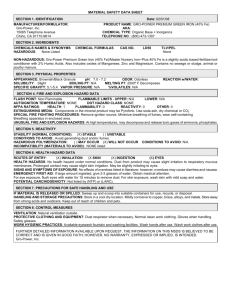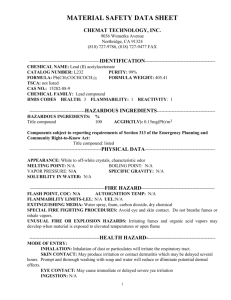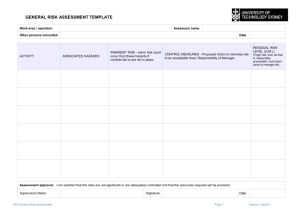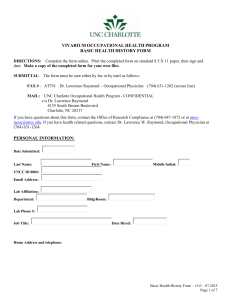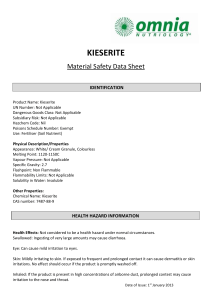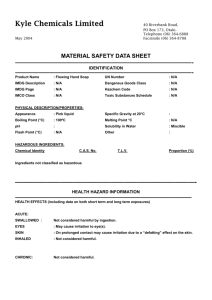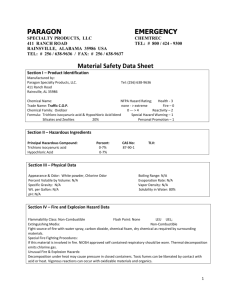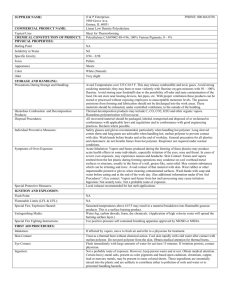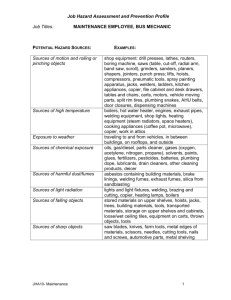Chapter 8: Industrial Hygiene
advertisement
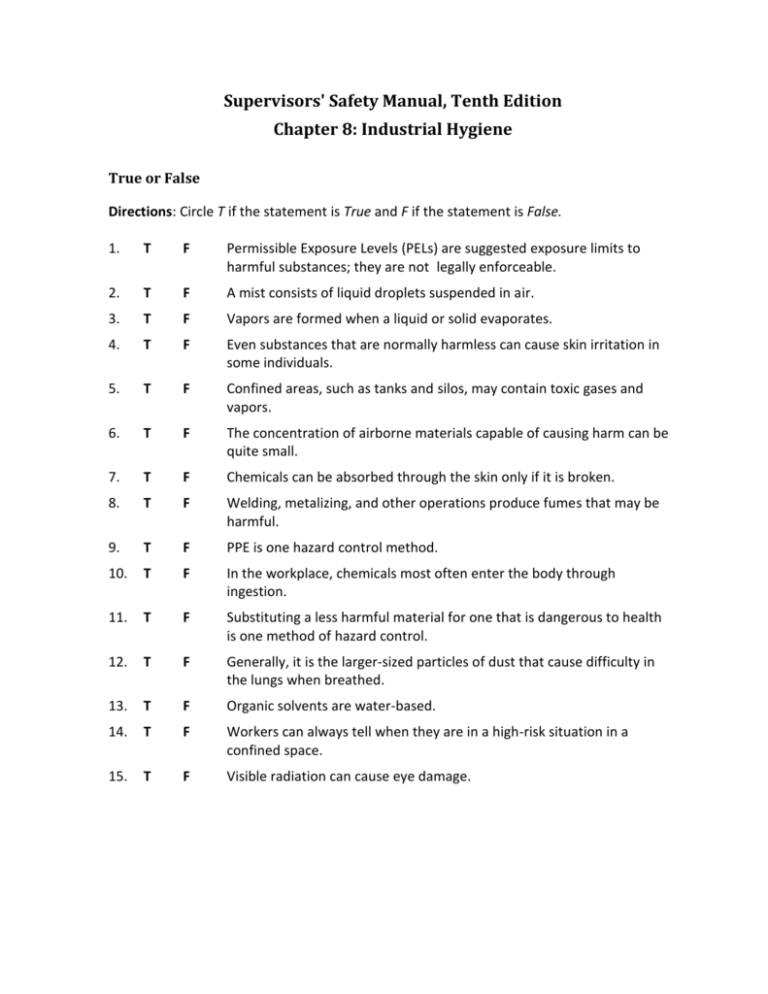
Supervisors' Safety Manual, Tenth Edition Chapter 8: Industrial Hygiene True or False Directions: Circle T if the statement is True and F if the statement is False. 1. T F Permissible Exposure Levels (PELs) are suggested exposure limits to harmful substances; they are not legally enforceable. 2. T F A mist consists of liquid droplets suspended in air. 3. T F Vapors are formed when a liquid or solid evaporates. 4. T F Even substances that are normally harmless can cause skin irritation in some individuals. 5. T F Confined areas, such as tanks and silos, may contain toxic gases and vapors. 6. T F The concentration of airborne materials capable of causing harm can be quite small. 7. T F Chemicals can be absorbed through the skin only if it is broken. 8. T F Welding, metalizing, and other operations produce fumes that may be harmful. 9. T F PPE is one hazard control method. 10. T F In the workplace, chemicals most often enter the body through ingestion. 11. T F Substituting a less harmful material for one that is dangerous to health is one method of hazard control. 12. T F Generally, it is the larger-sized particles of dust that cause difficulty in the lungs when breathed. 13. T F Organic solvents are water-based. 14. T F Workers can always tell when they are in a high-risk situation in a confined space. 15. T F Visible radiation can cause eye damage. Multiple Choice Directions: Select the best answer and place the corresponding letter in the box provided. 16. 1 Which of the following is NOT a way for a chemical to enter the body? A. Absorption B. Puncture C. Inhalation D. Sublimation 17. 1 The best way to approach a noise problem is to: A. Issue personal protective equipment. B. Engineer it out. C. Use job rotation to shorten exposure to the noise. D. All of the above. 18. 1 High temperatures can lead to: A. Heat cramps. B. Heat exhaustion. C. Heat stroke. D. All of the above. 19. 1 All of the following are chemical particulates EXCEPT: A. Dust B. Fumes C. Smoke D. Gas 20. 1 All of the following statements about solvents are true EXCEPT: A. They affect the central nervous system. B. They consist of dust, fumes, and smoke. C. They can cause dizziness, nausea, and numbness. D. Over-exposure can cause death. 21. 1 Physical factors to consider when determining hazards include: A. Ionizing radiation. B. Temperature extremes. C. Noise D. All of the above. 22. 1 Occupational skin diseases are: A. Rare B. A minor industrial hygiene problem. C. The most costly of any occupational disease. D. The least costly of any occupational disease. 23. Which of the following is NOT a biological hazard? A. Viruses B. Bacteria C. Organic solvents D. Fungi 24. 1 To control workplace hazards: A. Change the process. B. Change the rules, procedures, or practices. C. Wear PPE. D. All of the above. 25. 1 Cold protection measures include: A. Increase warmth and layers of clothing. B. Increase the rate of activity. C. Limit exposure to cold. D. All of the above. Chapter 8: Industrial Hygiene Answer Key 1. F 2. T 3. T 4. T 5. T 6. T 7. F 8. T 9. T 10. F 11. T 12. F 13. F 14. F 15. T 16. D 17. B 18. D 19. D 20. B 21. D 22. C 23. C 24. D 25. D
